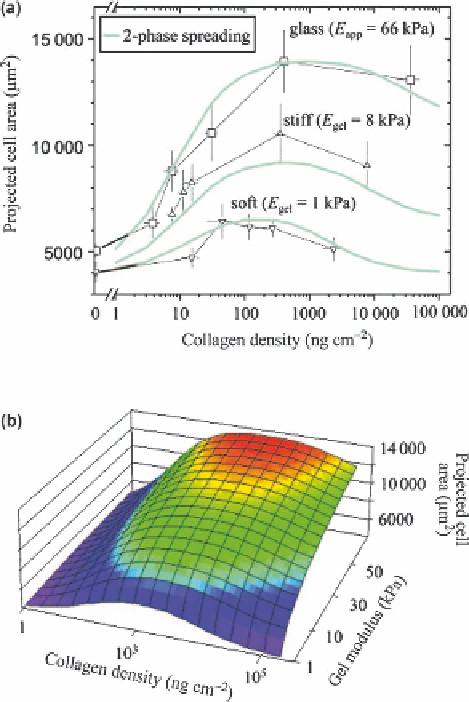Biomedical Engineering Reference
In-Depth Information
d
n
4
t
3
n
g
|
0
n
3
.
Figure 2.16
Spread cell area as a function of ligand density on soft, stiff, and rigid
substrates. (a) The projected cell area was determined 4 h after plating
(n410 per datapoint), giving the indicated average (mean
standard
error). The smooth curves are calculated from a model for two-phase
spreading expressed in terms of both E (or E
app
) and collagen density.
Note that cells respond strongly to increasing collagen density on glass
and hardly at all on soft gels. (b) Curved surface in three dimensions that
fits SMC spreading.
(Reprinted by kind permission from CellPress, Biophysical Society.)
induce attachment and growth of neurons, whereas they suppress astrocyte
growth. The number of astrocytes on soft gels is lower than on hard gels, even
in the absence of mitotic inhibitors normally used to temper the astrocyte
population. The stiffness of materials required for optimal neuronal growth,
characterized by an elastic modulus of several hundred Pascals, is in the range
measured for intact rat brain. The authors concluded that their results
emphasize the potential importance of material substrate stiffness and elasticity
as an essential design compound in terms of future biomaterials intended to
promote neuronal regeneration across a lesion in the central nervous system.

